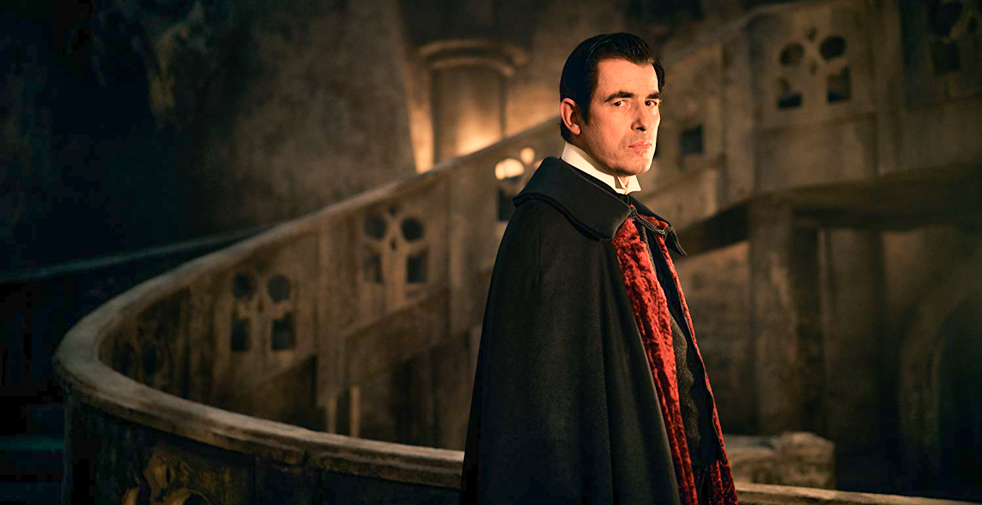
When writers Mark Gatiss and Steven Moffat, creators of the popular series “Sherlock,” announced that they were writing a three-episode miniseries based on Bram Stoker’s classic novel “Dracula,” expectations were high.
The duo’s work on “Sherlock,” most notably their excellent dialogue writing, has received critical praise and amassed a significant following around the world. There was little doubt that their writing style would translate well from Sherlock’s world to Count Dracula’s, and indeed it does.
“Dracula” follows a more classical vampire formula than most modern media featuring the supernatural beast. Gatiss and Moffat’s count wears a cape, lives in a massive medieval castle in the mountains of Transylvania and is terrified of crucifixes. Still, the miniseries does not simply follow the plot of Stoker’s original novel.
While the episodes do follow Count Dracula (Claes Bang of “The Square”) as he attempts to reach England and a character named Van Helsing’s attempts to stop him, as in the original novel, Van Helsing is not a stuffy old Dutch professor. Instead, the character is a delightfully witty and self-professed nun in a local convent.
The character of Sister Van Helsing, who results from this creative rewrite, is one of the miniseries’ greatest strengths, as portrayed by actress Dolly Wells (“Pride and Prejudice and Zombies”). The nun is the perfect rival for Count Dracula, constantly checking his ego with her own intellect. In fact, she is the only character that refuses to let the count get the best of her. Every conversation between the two is a struggle for control and dominance, and Dracula’s abrasive arrogance and cruelty make Van Helsing’s eventual triumph over him incredibly satisfying to the viewer.
The miniseries is also extremely beautiful, from elaborate period costumes to the absurd gothic décor of Count Dracula’s castle to the beautiful snow-covered valleys of Transylvania. The series is visually reminiscent of the 2016 one-off “Sherlock” special “The Abominable Bride,” which moves Gatiss and Moffat’s modern-day versions of Sherlock Holmes and Dr. Watson back to their native Victorian times.
As it turns out, Victorian settings may play well to Gatiss and Moffat’s strengths, because “Dracula” begins to fall apart when the two writers move it from 1897 forward to 2020 at the beginning of the third and final episode. There is nothing wrong with this move on its own; Dracula is immortal so it is not much of a stretch to move things forward 123 years. The problem is that same things that make the first two episodes of the miniseries great also make the last episode borderline insufferable.
The trouble begins with the settings Gatiss and Moffat choose. The scenes in modern-day London all seem to be set in oversaturated dance clubs full of ecstasy-fueled ravers and annoying strobe lights, boring-looking hotel rooms and sterilized hospital hallways. The beautiful costumes and sets that made the first two episodes so interesting to look at are gone, leaving in their place an atmosphere that feels ordinary at best.
Still, the main reason why the last episode is so much worse is that Gatiss and Moffat’s writing totally falls apart. The dialogue is still fairly interesting, though the absence of Dolly Wells’s Sister Helsing character from most of this episode makes it slightly less entertaining.
The problem is that the writers seem to completely lose their ability to craft a cohesive plot. Gatiss and Moffat introduce multiple characters that seem to serve no meaningful purpose in the main story and, worse still, distracting and uninteresting subplots, which exist in parallel to the story of Dracula and Van Helsing and interact only tangentially with them.
Matthew Beard’s (“The Imitation Game”) character, Jack, gets significant screen time in the third episode, yet he seemingly exists only to drive the ill Van Helsing to her final confrontation with Count Dracula.
Then there’s Lucy, portrayed by Lydia West (“Years and Years”), who actually does serve a relatively important, although abstract, role in the main plot. The problem is that the episode dedicates far too much screen time to following her and her group of friends, giving her character disproportionate focus and boring the viewer.
The result of these subplots and unnecessary characters is that the third episode, which has a runtime of over 90 minutes, seems to drag on forever. By the time the miniseries reaches its conclusion, the viewer cannot help but feel relieved that the whole thing is finally over.
Mark Gatiss and Stephen Moffat’s new miniseries “Dracula” starts strong with striking visuals, intriguing characters and entertaining dialogue, but its final episode leaves the viewer with such a sour taste in his mouth that it is difficult to recommend a viewing.
